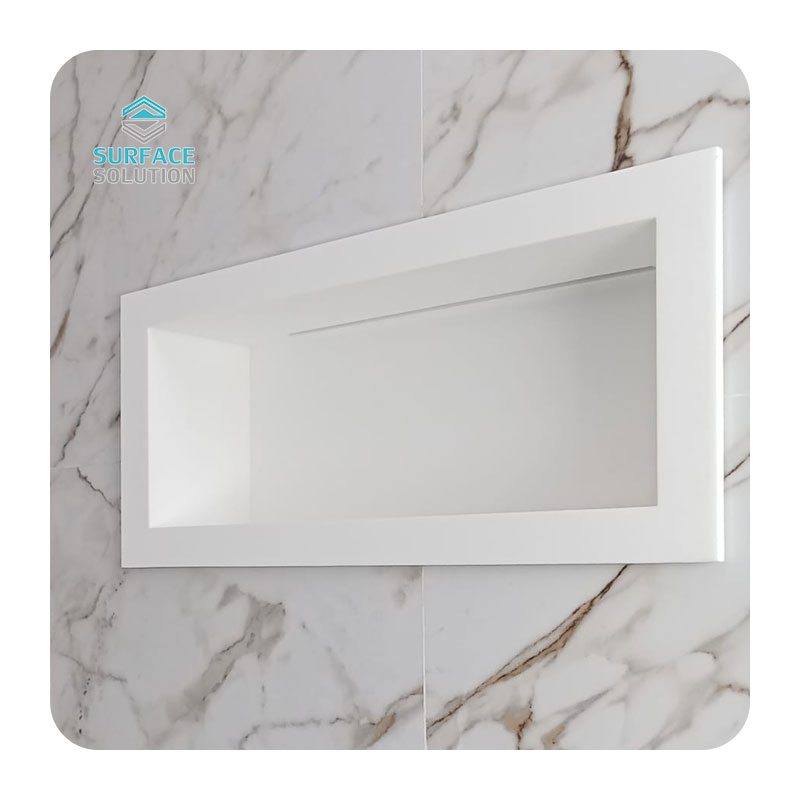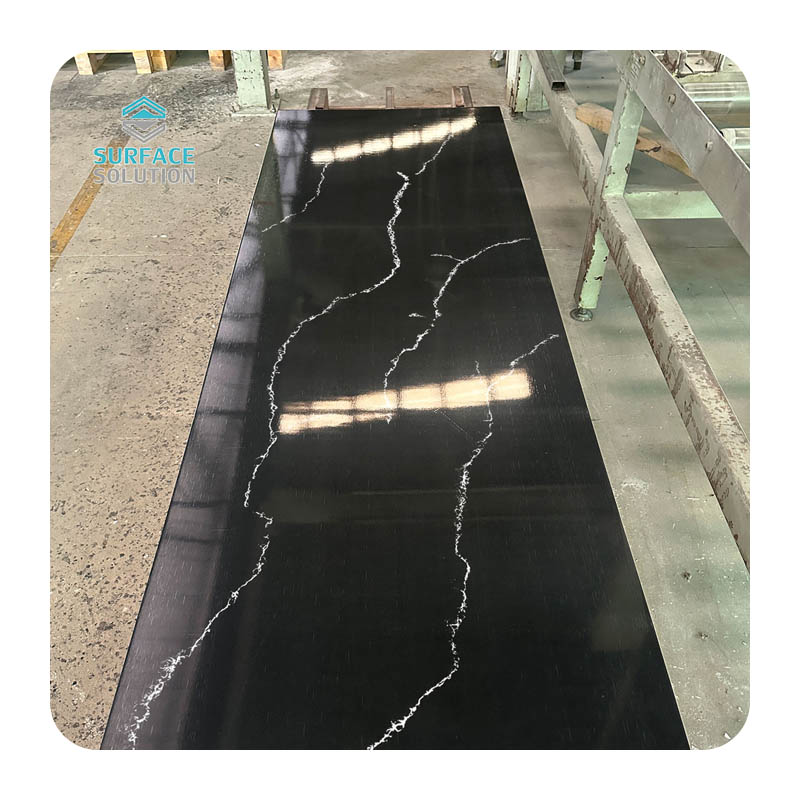Acrylic solid surface materials have long been celebrated for their durability, versatility, and seamless aesthetics, making them a staple in industries ranging from interior design to healthcare. However, the true potential of these materials is being unlocked through integration with cutting-edge technology—transforming them from passive substrates into active, high-performance solutions. This synergy not only enhances the inherent properties of
acrylic solid surfaces but also expands their application horizons, addressing modern demands for smart, sustainable, and user-centric design.
Technology has revolutionized how
acrylic solid surface materials are manufactured, replacing traditional, labor-intensive processes with automated, data-driven systems that boost precision and reduce waste.
3D Modeling and Digital Prototyping: Advanced software like CAD (Computer-Aided Design) allows designers to create intricate, customized designs for acrylic surfaces—from complex countertop patterns to curved wall panels—without physical prototypes. This not only speeds up the design cycle but also ensures every detail is accurate before production begins.
Automated Cutting and Shaping: CNC (Computer Numerical Control) machining and laser cutting technologies enable precise, repeatable cuts on acrylic solid surfaces. Unlike manual methods, these tools minimize material waste and ensure consistent quality, even for large-scale projects like hotel lobbies or hospital corridors.
Real-Time Quality Control: IoT (Internet of Things) sensors embedded in production lines monitor factors like temperature, pressure, and material thickness during the curing process. This real-time data prevents defects and ensures each batch of acrylic surface meets strict performance standards.

Acrylic solid surfaces already excel in resistance to stains, impacts, and heat—but technology is elevating these properties to meet more demanding use cases, while adding new functional capabilities.
Nanocoating Technology: Applying nanoscale coatings to acrylic surfaces creates an ultra-thin, invisible barrier that enhances scratch resistance and repels liquids (such as oil, coffee, or chemicals). This makes maintenance easier, especially in high-traffic areas like restaurants or office break rooms.
Antimicrobial Integration: For healthcare settings (hospitals, clinics) or food processing facilities, technology enables the infusion of antimicrobial agents into acrylic solid surfaces during production. These agents inhibit the growth of bacteria, viruses, and fungi—reducing the risk of cross-contamination without compromising the material’s appearance.
Conductive and Light-Emitting Features: By integrating conductive layers or LED modules into acrylic surfaces, technology turns them into interactive or decorative elements. Examples include smart kitchen countertops with built-in touch controls for appliances, or retail display cases that illuminate products from within—blending functionality with visual appeal.
The fusion of technology and acrylic solid surfaces is redefining how these materials are used, shifting from static installations to dynamic, integrated components in smart spaces.
Smart Interiors: In homes and offices, acrylic surfaces can be paired with sensors to act as environmental monitors—displaying temperature, humidity, or air quality data via embedded digital screens. For example, a bathroom vanity made of acrylic could show water usage metrics to promote sustainability.
Healthcare Innovations: In hospitals, acrylic solid surface walls can be designed with built-in RFID (Radio-Frequency Identification) readers to track medical equipment or patient wristbands, streamlining workflows. Their seamless, non-porous nature also makes them easier to sanitize, a critical feature in healthcare settings.
Architectural Design: Translucent acrylic solid surfaces, combined with LED technology and smart lighting systems, are being used to create dynamic building facades or interior partitions. These surfaces can change color or brightness in response to external factors (like daylight) or user commands, enhancing the ambiance of public spaces like malls or airports.

As sustainability becomes a global priority, technology is helping acrylic solid surface materials reduce their environmental footprint—from production to disposal.
Recycled Material Integration: Advanced recycling technologies now allow post-consumer acrylic waste (such as old countertops or display cases) to be processed and reintroduced into new acrylic surface production. This reduces reliance on virgin plastic and cuts down on landfill waste.
Energy-Efficient Production: Smart manufacturing systems optimize energy use during acrylic curing and shaping. For instance, AI-powered ovens adjust temperature and heating time based on real-time data, reducing energy consumption by up to 20% compared to traditional methods.
Longer Lifespan: By enhancing durability (via nanocoatings) and repairability (via precision machining), technology extends the lifespan of acrylic solid surfaces. This means fewer replacements over time, lowering the material’s overall environmental impact.
The integration of technology with acrylic solid surface materials is not just a trend—it is a paradigm shift that combines the best of material science and digital innovation. By enhancing precision in manufacturing, boosting performance, expanding applications, and promoting sustainability, this synergy is creating solutions that meet the evolving needs of industries and consumers alike. As technology advances further—with innovations like AI-driven design or biodegradable acrylic formulations—the potential for these materials will only grow, solidifying their role as a cornerstone of smart, sustainable, and functional design in the future.
If you need to tailor this article to a specific industry (e.g., healthcare, interior design) or add technical details about a particular technology, I can refine it into a targeted version that aligns with your needs.



 What Is Solid Surface Material? A Complete GuideIn the world of interior design and home renovation, "solid surface material" is a term frequently heard—but what exactly is it? Unlike natural materials mined from the earth or rigid synthetic alternatives, solid surface is a engineered man-made mater
What Is Solid Surface Material? A Complete GuideIn the world of interior design and home renovation, "solid surface material" is a term frequently heard—but what exactly is it? Unlike natural materials mined from the earth or rigid synthetic alternatives, solid surface is a engineered man-made mater What Are Solid Surface Countertops Made Of? A Comprehensive BreakdownSolid surface countertops have become a popular choice in modern kitchens and bathrooms, celebrated for their seamless appearance, durability, and versatility. Unlike natural stone (such as granite or marble) or ceramic tiles, soli
What Are Solid Surface Countertops Made Of? A Comprehensive BreakdownSolid surface countertops have become a popular choice in modern kitchens and bathrooms, celebrated for their seamless appearance, durability, and versatility. Unlike natural stone (such as granite or marble) or ceramic tiles, soli

















